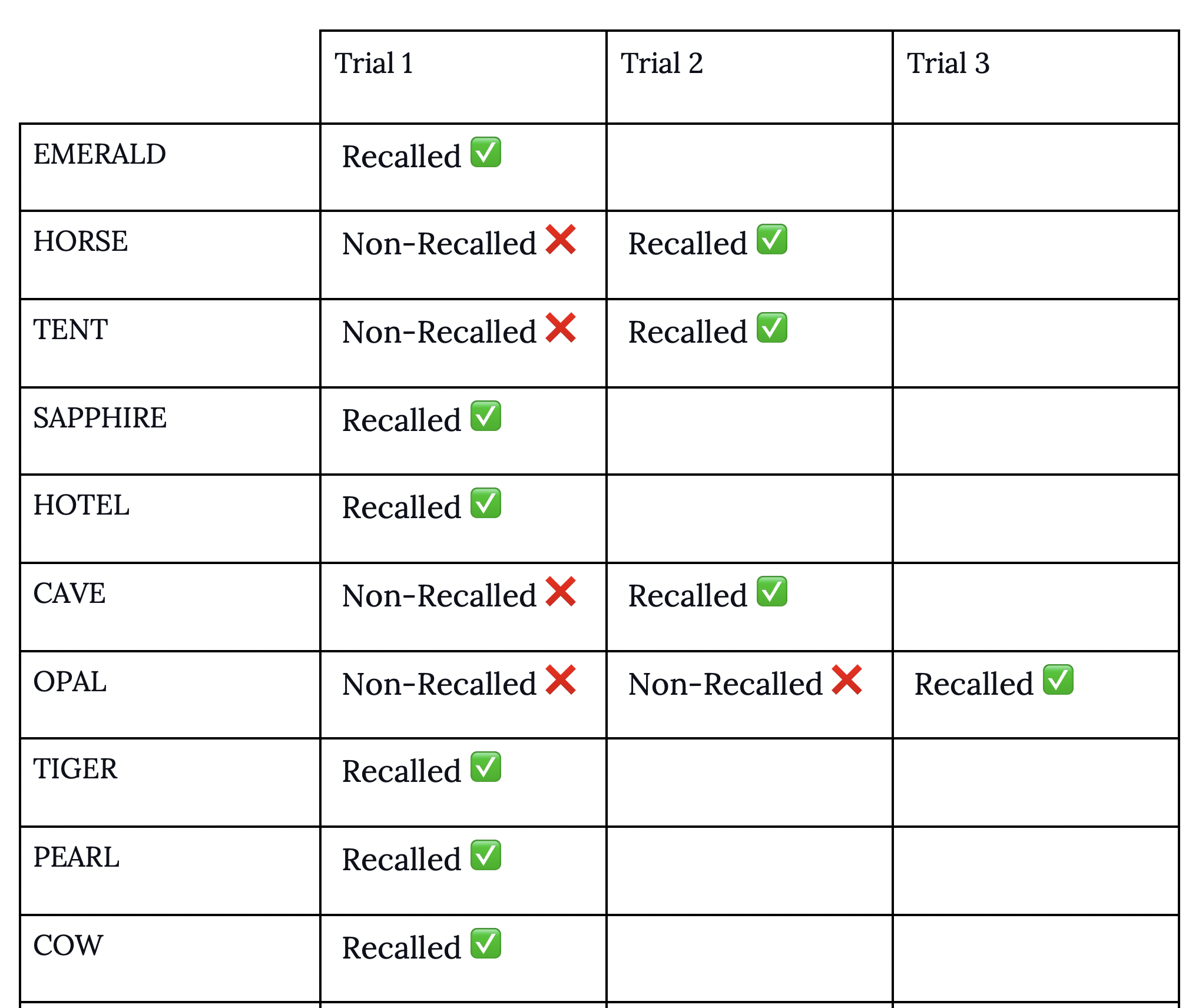Verbal memory

Figure: example of a time-limited (1min) animal verbal fluency task.
The Hopkins Verbal Learning Test [HVLT, 1] serves as a measure of verbal learning and memory.
The HVLT is composed of 12 items, organised into three semantic categories, and presented over three consecutive learning trials. The examiner reads the list aloud at the rate of 1 word every 2 seconds, and the patient is asked to memorise the list.
The measure of interest is the patient’s free recall. This procedure is repeated two more times. After the learning period, 24 words are read aloud to the patient who needs to verbally indicate if the word was also in the previous 12-item list (12 targets) or not (12 distractors). Items and distractors are either related distractors, meaning from the same semantic clusters as the target words, or unrelated. Scores extracted from the HVLT are listed below:
| Score | Info |
|---|---|
| hvlt_delay | Word recall (HVLT) |
| hvlt_delayt | Word recall t-score (HVLT) |
| hvlt_discrim | Word recognition (HVLT) |
| hvlt_discrimt | Word recognition t-score (HVLT) |
| hvlt_fa1 | Word recognition related false alarms (HVLT) |
| hvlt_fa2 | Word recognition unrelated false alarms (HVLT) |
| hvlt_fa3 | Word recognition false positive (HVLT) |
| hvlt_hit | Word recognition hits (HVLT) |
| hvlt_imt | Word immediate recall t-score (HVLT) |
| hvlt_learn | Word learning (HVLT) |
| hvlt_perc | Word recall retained (HVLT) |
HVLT= the Hopkins Verbal Learning Test-revised.
1. Brandt, J., The hopkins verbal learning test: Development of a new memory test with six equivalent forms. Clinical Neuropsychologist, 1991. 5(2): p. 125-142.